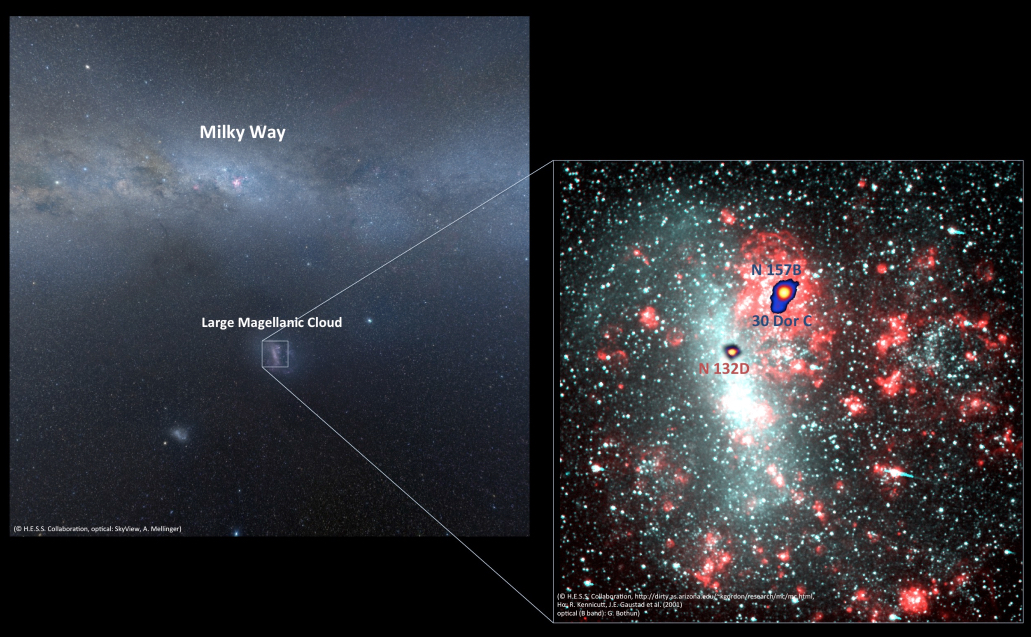
 Credit: H.E.S.S. Collaboration; optical: SkyView, A. Mellinger
Credit: H.E.S.S. Collaboration; optical: SkyView, A. Mellinger
LMC VHE
Very high energy Gamma-radiation allows us to probe some of the most extreme and energetic processes in the Universe. These extreme Gamma-rays can be produced by powerful supernovae and highly magnetized neutron star pulsars. Detecting this high-energy emission is the job of H.E.S.S., the High Energy Stereoscopic System telescope array. H.E.S.S. is located in Namibia, and measures high energy Gamma-rays by detecting the brief, faint flashes of light that these photons produce as they interact with the earth's atmosphere. Observations with H.E.S.S. have mostly found very high energy gamma-ray sources residing within the Milky Way. A new report by H.E.S.S. scientists, has, for the first time, detected sources of very high energy Gamma-rays from beyond the Milky Way. Three sources of emission were detected in the Large Magellanic Cloud, a satellite galaxy of the Milky Way. One source is associated with a supernova remnant, while another is associated with the high-energy wind from a pulsar. These sources are similar to other sources detected by H.E.S.S. in the Milky Way, though more powerful than the Milky Way analogues. The third source is associated with a superbubble in a massive star-forming region. This superbubble is blown out by supernova and powerful stellar winds, and is the first superbubble to be shown to emit radiation at these extreme energies. One surprise was a source which was not detected: Supernova 1987a, the youngest supernova in the LMC and the nearest bright supernova to earth in over 400 years.
Published: January 26, 2015
<
HEA Dictionary ● Archive
● Search HEAPOW
● Other Languages
● HEAPOW on Facebook
● Download all Images
● Education ● HEAD
>

Each week the HEASARC
brings you new, exciting and beautiful images from X-ray and Gamma ray
astronomy. Check back each week and be sure to check out the HEAPOW archive!
Page Author: Dr. Michael F. Corcoran
Last modified Tuesday, 27-Feb-2024 10:06:37 EST


